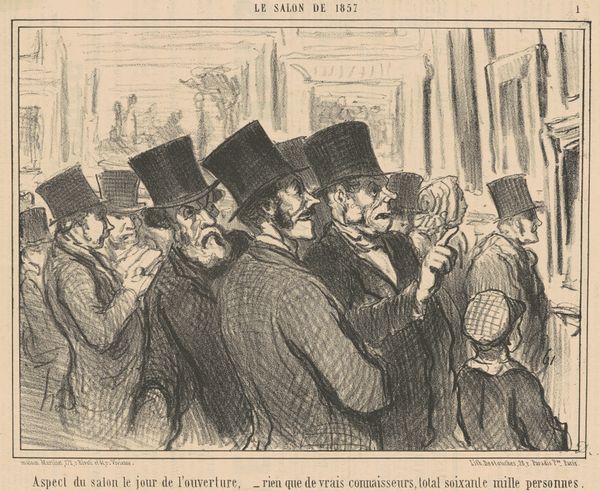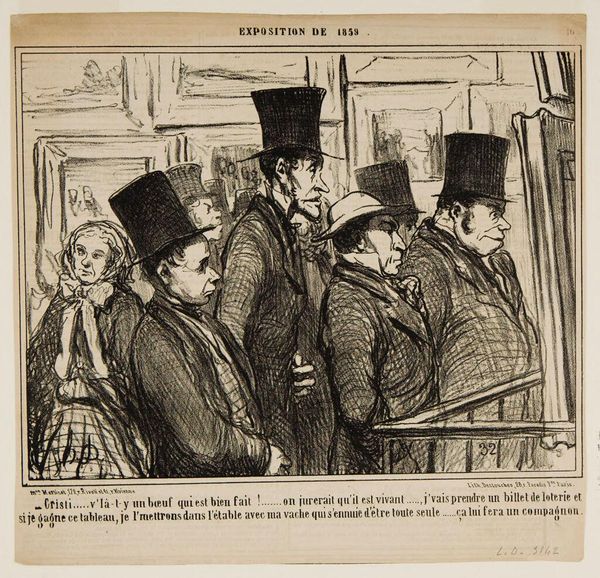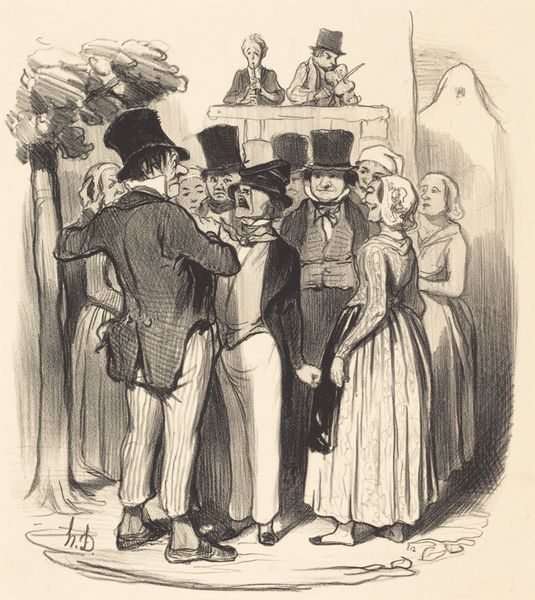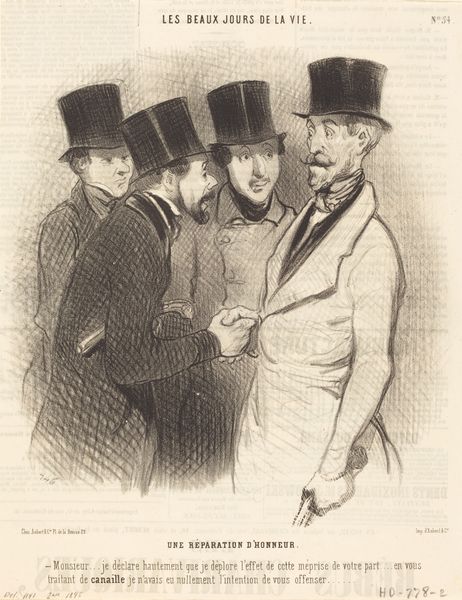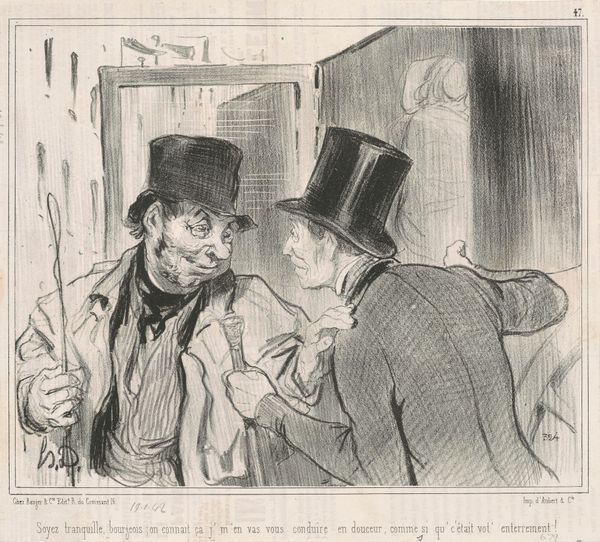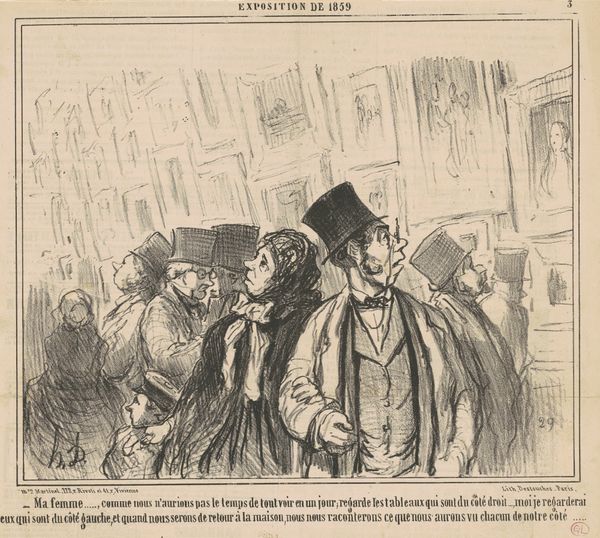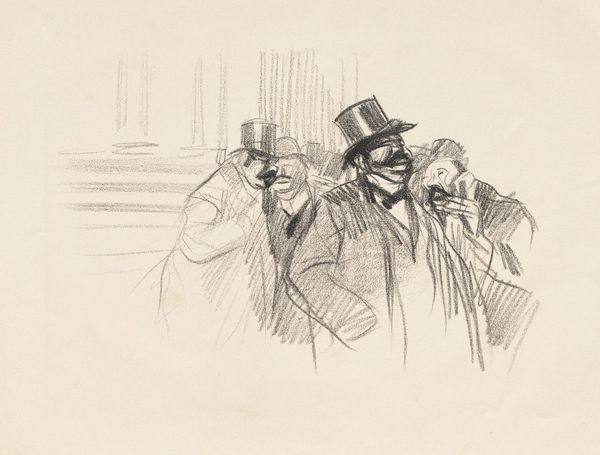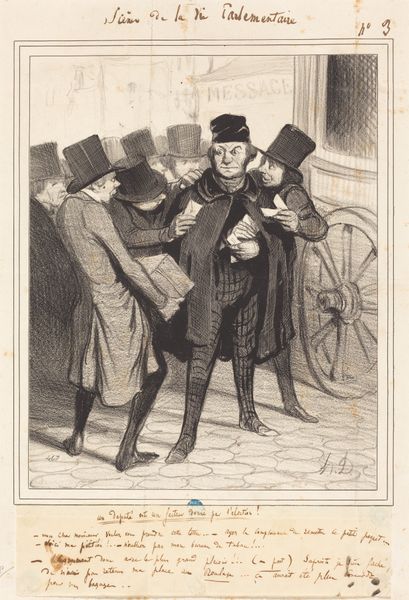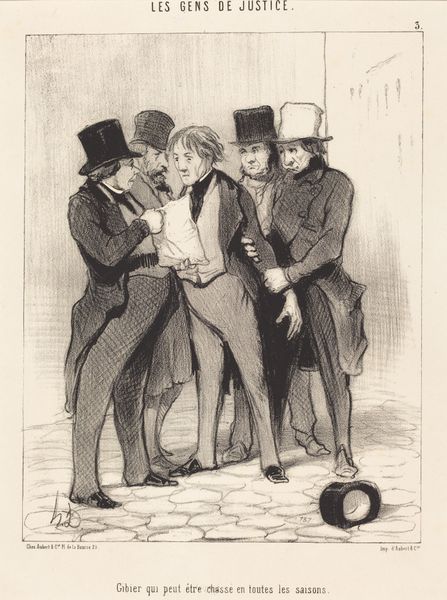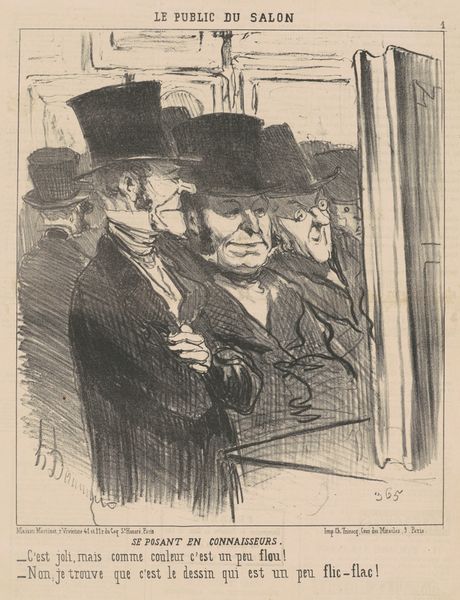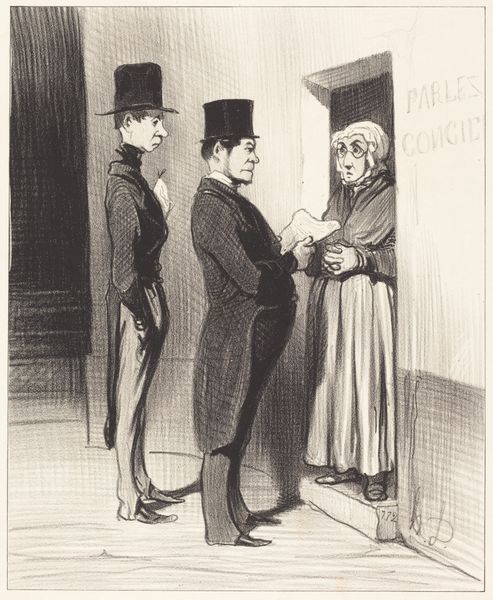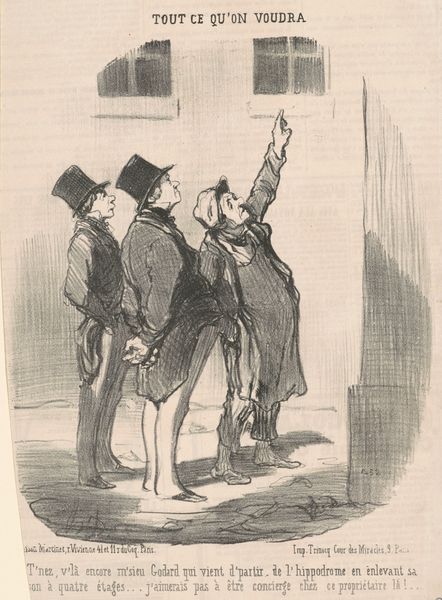
Copyright: National Gallery of Art: CC0 1.0
Editor: We're looking at Honoré Daumier's "Cristi... v'la-t-y un boeuf qui est bien fait!...", a print drawing from 1859. It looks like a group of people viewing art; their faces seem rather… judgmental, almost. What do you see in this piece? Curator: My attention is immediately drawn to the artist's strategic use of line. Observe how Daumier varies the density and direction of hatching to model form and differentiate textures. Notice, for instance, the contrast between the smooth surfaces of the top hats and the more intricately rendered clothing. Editor: The hats really do stand out. Are they meant to create a sort of visual rhythm? Curator: Precisely! Consider the repetition of the top hat motif and how it guides the viewer's eye across the composition. But consider how each face under those hats still receives individualized treatment; the angle and light on each face make us question what exactly Daumier's commentary is about this class of people, whether their interests are the art itself or something more transactional, concerning class. Editor: That's a good point. The range of expressions is quite varied, despite their shared social status as evidenced by their hats and coats. Curator: Absolutely. And reflect on how the artist has carefully constructed a dynamic interplay between positive and negative space. Do you note how the lighter areas accentuate the darker contours, creating a sense of depth and volume? The interplay with each face allows it to retain unique visual weight. Editor: It’s all so intentional and meticulously crafted! I see the nuances in how the light interacts with each unique figure in the print. Curator: Indeed. By focusing on these formal elements, we gain a richer appreciation for Daumier's artistry. Editor: This really helps see past just the surface of what they are observing, and lets you delve into the craft. Thank you!
Comments
No comments
Be the first to comment and join the conversation on the ultimate creative platform.
